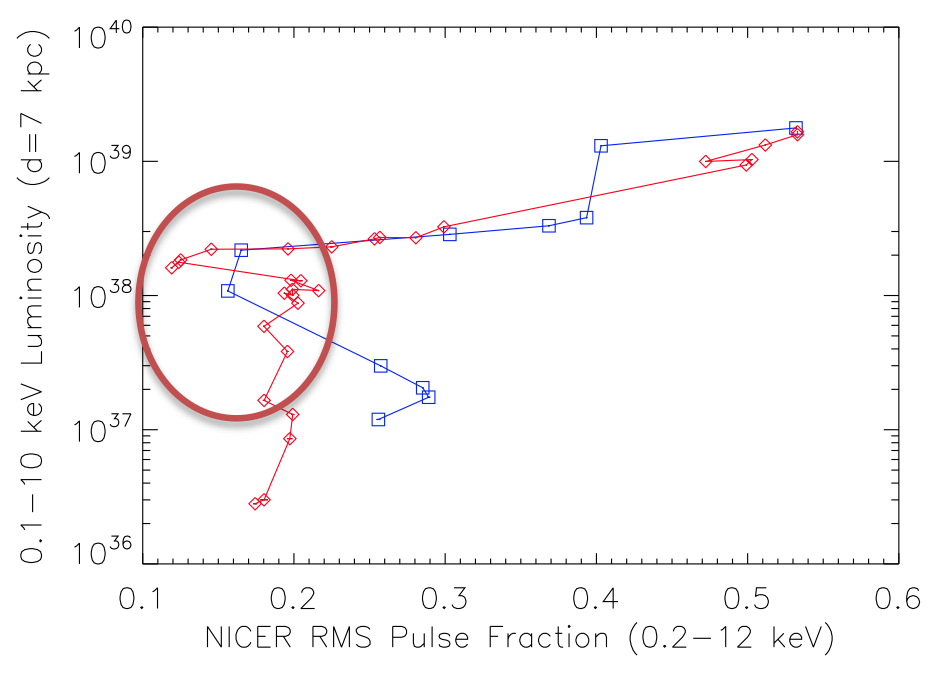NICER / ISS Science Nugget for June 21, 2018Joint NICER/GBM observations of the first Galactic ULX pulsarLast week, NICER's first paper on an Ultraluminous X-ray pulsar (titled "NICER and Fermi GBM Observations of the First Galactic Ultraluminous X-ray pulsar Swift J0243.6+6124" by Wilson-Hodge et al.) was accepted for publication in The Astrophysical Journal. This is NICER's 9th peer-reviewed science result to be published. Ultraluminous X-ray (ULX) sources were first found in other galaxies and were once proposed to be due to intermediate-mass black holes (100-10,000 times the mass of the Sun). These sources are defined by their luminosity being greater than 1039 erg/s. Recently, four ULXs have been discovered to be pulsars. These pulsars are different from the typical rotation-powered pulsars observed with NICER, because they are powered by accretion from an orbiting companion star. Our Milky Way Galaxy contains many such accreting pulsars, but none were known to be ultraluminous. At a distance of about 7 kpc, measured using results from the European Gaia mission, Swift J0243.6+6124 reached a peak average luminosity of 1.8 x 1039 erg/s on November 6, 2017, making it the brightest pulsar in our Galaxy, and its first known ULX. Studying this object can help us to understand the ultraluminous X-ray pulsars in other galaxies.
The rich NICER dataset showed us that Swift J0243.6+6124 underwent a transition between two accretion regimes at a critical luminosity of about 1038 ergs/s. At this time, the pulse profile transitioned from single peaked to double peaked, the pulsed fraction reached a minimum, and the energy spectrum softened. This is the highest observed critical luminosity in any accretion-power pulsar, suggesting that the magnetic field for Swift J0243.6+6124 is unusually high, 1013 G. NICER observed these transitions during both the rise and declining phases of the outburst.
These observations of Swift J0243.6+6124 suggest that the ultraluminous X-ray pulsars in other galaxies may also be accreting neutron stars with strong magnetic fields. NICER
|





